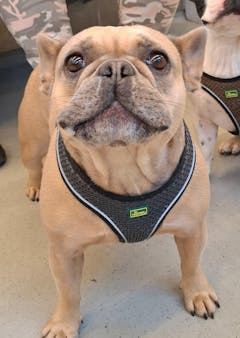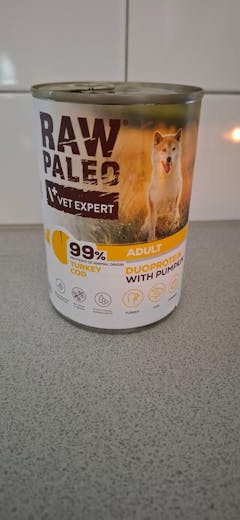Hypoallergent Foder – Hund
Hypoallergent Foder Hund: Lösningen för Foderallergier och Känsligheter
Lider din hund av ihållande klåda, återkommande öroninfektioner eller magproblem som diarré och kräkningar? Dessa kan vara tecken på foderallergi eller foderintolerans. Att hitta rätt diet är avgörande för att lindra din hunds obehag och förbättra dess livskvalitet. På Zoostar.se erbjuder vi ett brett sortiment av hypoallergent foder för hundar som är speciellt framtagna för att hantera dessa utmaningar.
Vad Är Foderallergi och Foderintolerans?
Foderallergi är en immunreaktion mot ett specifikt protein i fodret, medan foderintolerans är en icke-immunmedierad reaktion (t.ex. på grund av matsmältningsproblem). Symptomen är ofta likartade och inkluderar:
- **Hudproblem:** Intensiv klåda, rodnad, utslag, håravfall, och återkommande öroninfektioner. Vi erbjuder även specialfoder för hudhälsa hund.
- **Mag-tarmproblem:** Kroniska kräkningar, diarré, gasighet och buksmärta. För mer specifika magproblem, se vårt foder för mage- och tarmsjukdom hund.
- **Andra symptom:** I sällsynta fall andningsproblem eller beteendeförändringar.
Diagnos ställs bäst genom en strikt eliminationsdiet i samråd med veterinär, där ett hypoallergent foder används.
Hur Fungerar Hypoallergent Foder?
Hypoallergent foder är designat för att minimera risken för allergiska reaktioner genom två huvudstrategier:
- **Hydrolyserade Proteiner:** Proteinerna bryts ned till så små fragment att hundens immunsystem inte känner igen dem som allergener. Detta är den mest effektiva metoden och ofta standarden i veterinärfoder för allergier.
- **Nya Proteinkällor (Novel Proteins):** Foder med ovanliga proteinkällor som din hund troligen aldrig ätit tidigare (t.ex. anka, vilt, insekter).
Dessutom innehåller dessa foder ofta:
- Enkel, lättsmält kolhydratkälla (ris, potatis).
- Tillsatta Omega-3 fettsyror (EPA & DHA) för att minska inflammation och stödja hud- och päls.
- Prebiotika och probiotika för att främja en sund tarmflora.
- Begränsat antal ingredienser för att minska allergenexponeringen.
Vem Behöver Hypoallergent Foder?
Hypoallergent foder är lämpligt för hundar med:
- Misstänkt eller bekräftad foderallergi/intolerans.
- Kroniska hudproblem som klåda, rodnad och återkommande öroninfektioner.
- Kroniska mag-tarmproblem som kräkningar och diarré.
Kom ihåg att alltid konsultera en veterinär innan du påbörjar en eliminationsdiet eller byter till ett hypoallergent foder.
Kompletterande Åtgärder för Allergiska Hundar
För att ge din hund bästa möjliga lindring och livskvalitet, komplettera foderbytet med:
- **Strikt Dietföljsamhet:** Inga undantag! Undvik all mat, godis och tuggben som inte är en del av den hypoallergena dieten. Informera alla som interagerar med hunden.
- **Behandling av Sekundära Infektioner:** Om huden är skadad av klåda, kan bakterie- eller jästsvampsinfektioner uppstå. Dessa kräver ofta veterinärbehandling med mediciner och medicinska schampon.
- **Hud- och Pälsvård:** Använd milda, allergivänliga schampon och överväg tillskott av Omega-3 fettsyror för att stödja hudens barriärfunktion.
- **Miljömässig Kontroll:** Om hunden även lider av atopi (allergi mot miljöallergener som pollen eller kvalster), minska exponeringen genom regelbunden städning och bad.
- **Regelbundna Veterinärbesök:** Viktigt för uppföljning och justering av behandlingsplanen. Veterinären kan också hjälpa till att hantera andra relaterade hälsoproblem som viktkontroll, ledproblem, diabetes, njursjukdom, leversjukdom, urinvägsproblem, stress/nervositet, tandhälsa och hjärtsjukdom.
På Zoostar.se har vi valt ut de bästa hypoallergena fodren för att din hund ska kunna leva ett symptomfritt och lyckligt liv. Upptäck vårt fullständiga sortiment av hypoallergent foder för hundar idag!
Vanliga frågor om Hypoallergent Foder Hund
Här besvarar vi några av de mest frekventa frågorna vi får angående hypoallergent foder för hundar.
Vad är foderallergi/foderintolerans hos hundar och hur yttrar det sig?
Foderallergi och foderintolerans är vanliga problem hos hundar som kan orsaka stort obehag och påverka livskvaliteten avsevärt. Även om symptomen kan likna varandra, är mekanismerna bakom dem olika. Vad är foderallergi? Foderallergi är en immunmedierad reaktion mot ett specifikt protein i fodret. Hundens immunförsvar misstolkar ett annars ofarligt protein som ett hot, vilket utlöser en allergisk reaktion. Detta kan utvecklas när som helst i livet, även om hunden ätit samma foder under lång tid. De vanligaste allergenerna är proteiner från nötkött, mejeriprodukter, kyckling, vete, soja, lamm och fisk. Vad är foderintolerans? Foderintolerans, till skillnad från allergi, är inte immunmedierad. Det är en icke-allergisk reaktion mot en ingrediens i fodret som beror på problem med matsmältningen eller en överkänslighet mot vissa ämnen (t.ex. laktosintolerans). Foderintolerans är ofta dosberoende, vilket innebär att en liten mängd av den utlösande ingrediensen kanske inte ger symptom, medan en större mängd gör det. Hur yttrar sig foderallergi/foderintolerans hos hundar? Symptomen kan variera stort mellan individer och kan vara svåra att skilja från andra medicinska tillstånd. Därför är en veterinärutredning alltid nödvändig. De vanligaste symptomen inkluderar:
- Hudproblem: Detta är den absolut vanligaste typen av symptom. - Klåda (pruritus): Intensiv klåda över hela kroppen, men särskilt runt öron, tassar, ljumskar och armhålor. Hunden biter, slickar och kliar sig konstant. - Hudinflammationer: Rodnad, utslag, skorpor och finnar. - Sekundära infektioner: På grund av klådan och skadorna på huden kan bakterie- (pyodermi) och jästsvampsinfektioner (Malassezia) uppstå. - Håravfall: Till följd av ihållande kliande och slickande. - Återkommande öroninfektioner: Inflammation och klåda i öronen är ett mycket vanligt tecken på foderallergi.
- Mag-tarmproblem: Dessa symptom är också vanliga, men förekommer oftast tillsammans med hudproblem. - Kräkningar: Frekventa eller återkommande kräkningar. - Diarré: Kronisk eller återkommande diarré, ibland med slem eller blod. - Flatulens (gasighet): Ökad gasproduktion. - Buksmärta: Hunden kan visa tecken på obehag i buken. - Minskad aptit eller viktminskning: I mer allvarliga fall.
- Andra, mindre vanliga symptom: - Andningsproblem: In sällsynta fall kan foderallergi leda till andningssvårigheter. - Beteendeförändringar: Hunden kan bli orolig, irriterad eller nedstämd på grund av det ständiga obehaget. Diagnos av foderallergi/intolerans: Den enda tillförlitliga metoden för att diagnostisera foderallergi är en strikt eliminationsdiet. Detta innebär att hunden under en period (ofta 8-12 veckor) enbart får äta ett strikt hypoallergent foder som innehåller hydrolyserade proteiner eller en helt ny proteinkälla som hunden aldrig ätit tidigare (exotiska proteiner). Allt annat, inklusive godis, matrester och tuggben, måste uteslutas. Om symptomen förbättras under dieten, och sedan återkommer när det ursprungliga fodret återinförs, har diagnosen ställts. Det är viktigt att alltid genomföra detta i samråd med en veterinär. På Zoostar.se hittar du ett brett sortiment av hypoallergent foder för hundar, inklusive veterinärfoder som är anpassade för hundar med foderallergier och känsligheter.
Vad är ett hypoallergent foder och hur fungerar det?
Ett hypoallergent foder är speciellt framtaget för hundar med foderallergier eller känsligheter. Målet är att eliminera de ingredienser som oftast utlöser allergiska reaktioner och att erbjuda en säker och näringsrik kost. Hur fungerar hypoallergent foder? Det finns huvudsakligen två strategier som används i hypoallergena foder för att minimera risken för allergiska reaktioner:
- Hydrolyserade proteiner: Detta är den mest avancerade och effektiva metoden för att hantera foderallergier. Proteiner, som är de molekyler som oftast utlöser allergiska reaktioner, bryts ned till så små fragment (peptider och aminosyror) att hundens immunsystem inte längre känner igen dem som allergener. Immunförsvaret triggas därmed inte, och en allergisk reaktion undviks. Dessa foder kallas ofta för 'hydrolyserade dieter' och är den gyllene standarden för eliminationsdieter.
- Nya eller ovanliga proteinkällor (Novel Proteins): Dessa foder innehåller proteinkällor som din hund troligen aldrig har ätit tidigare, och därmed inte hunnit utveckla en allergi mot. Exempel på sådana proteinkällor kan vara vilt (t.ex. hjort, älg), anka, insekter, känguru eller struts. Även om dessa kan vara effektiva, är risken alltid att hunden har en oupptäckt allergi mot även dessa proteiner, eller att den utvecklar en ny allergi över tid. Därför är hydrolyserade dieter ofta att föredra för diagnos och långvarig hantering av bekräftade allergier. Utöver proteinkällan innehåller hypoallergent foder ofta: - Enkel kolhydratkälla: För att minimera risken för reaktioner används ofta en enda, lättsmält kolhydratkälla som ris, potatis eller tapioka. - Balanserad fettsammansättning: Ofta med tillsatta omega-3 fettsyror (EPA och DHA) från fiskolja, som har antiinflammatoriska egenskaper. Dessa är särskilt viktiga för hundar med hudproblem, eftersom inflammation i huden är ett vanligt symptom på allergi. Omega-3 kan även bidra till en hälsosam päls och en frisk hudhälsa hund. - Prebiotika och probiotika: För att stödja en sund tarmflora och en god matsmältning, vilket är avgörande för hundar med känslig mage eller mage- och tarmsjukdomar. - Begränsat antal ingredienser: Ju färre ingredienser, desto mindre risk för att hitta en allergen. Många hypoallergena foder är därför så kallade 'limited ingredient diets'. Vem behöver hypoallergent foder? - Hundar med misstänkt foderallergi eller foderintolerans (för att ställa diagnos genom eliminationsdiet). - Hundar med bekräftad foderallergi som en livslång diet. - Hundar med kroniska hudproblem (klåda, rodnad, återkommande öroninfektioner) där allergi misstänks. - Hundar med kroniska mag-tarmproblem (kräkningar, diarré) där foderkänslighet misstänks. Viktigt att tänka på: - Konsultera veterinär: Börja aldrig med en eliminationsdiet utan veterinärens vägledning. De kan hjälpa dig att välja rätt foder, övervaka processen och utesluta andra medicinska orsaker till symptomen. - Strikt diet: Under en eliminationsdiet är det absolut förbjudet att ge något annat än det hypoallergena fodret – inga godbitar, matrester, tuggben eller mediciner med smakämnen som kan innehålla allergener. - Tålamod: Det kan ta upp till 8-12 veckor att se full effekt av en eliminationsdiet. På Zoostar.se erbjuder vi ett brett urval av hypoallergent foder för hundar, inklusive många veterinärfoder som är utvecklade för att möta de strängaste kraven för hundar med allergier och känsligheter. Vi har även specialfoder som foder för led- och rörelsehälsa hund och viktkontroll för hundar, då dessa tillstånd ibland kan vara relaterade till eller förvärras av foderallergier.
Vilka andra åtgärder kan stödja min hund med foderallergi/känslighet?
Även om ett hypoallergent foder är grundläggande för att hantera foderallergier och känsligheter, är det ofta nödvändigt att komplettera med andra åtgärder för att uppnå bästa möjliga resultat och förbättra hundens livskvalitet. Här är några viktiga kompletterande åtgärder:
- Strikt följsamhet till dieten: Detta är absolut avgörande. En enda liten bit av fel mat kan utlösa en reaktion och sabotera hela dietutredningen. - Inga undantag: Allt hunden äter måste vara godkänt hypoallergent. Detta inkluderar godis, tuggben, matrester, bordsmat, och till och med smaksatta mediciner eller kosttillskott. - Informera alla: Se till att alla i hushållet, familj och vänner som interagerar med hunden, är medvetna om den strikta dieten och följer den noggrant. - Rena matskålar: Tvätta mat- och vattenskålar regelbundet för att undvika rester av tidigare foder.
- Hantera sekundära infektioner: Foderallergier leder ofta till skador på huden och kronisk inflammation, vilket gör hunden mottaglig för sekundära bakteriella infektioner (pyodermi) och jästsvampsinfektioner (Malassezia). - Veterinärbehandling: Dessa infektioner måste behandlas av veterinär med antibiotika och/eller svampmedel, ofta i kombination med medicinska schampon. - Regelbunden hygien: Regelbunden badning med milda, allergivänliga schampon kan lindra klåda och bidra till en hälsosam hudhälsa.
- Kosttillskott som stödjer hud och päls: Även om hypoallergent foder ofta innehåller vissa näringsämnen för hudhälsa, kan extra tillskott vara fördelaktiga: - Omega-3 fettsyror: EPA och DHA, från fiskolja, har kraftfulla antiinflammatoriska egenskaper som kan lindra klåda och förbörja hudens barriärfunktion. - Fettsyror från Gurkörtsolja eller Nattljusolja: Kan också bidra till hudens elasticitet och minska inflammation. - Biotin och Zink: Viktiga för en frisk hud och päls.
- Miljömässig kontroll (vid atopi/atopisk dermatit): Om din hund har både foderallergi och atopisk dermatit (allergi mot ämnen i omgivningen som pollen, kvalster), är det viktigt att hantera även de miljömässiga allergenerna. - Frekvent dammsugning och tvätt av bäddar. - Badning för att skölja bort allergener från pälsen. - Användning av luftrenare. - Veterinär kan ordinera mediciner för att kontrollera atopi.
- Läkemedelsbehandling vid behov: I vissa fall, särskilt under utredningsperioden eller vid svåra symptom, kan veterinären ordinera mediciner för att snabbt lindra klåda och inflammation. - Kortison: Effektivt men med biverkningar vid långvarig användning. - Ciklosporin eller Oclacitinib (Apoquel): Specifika immunmodulerande läkemedel mot klåda. - Lokala behandlingar: Salvor, sprayer eller öronrengöringsmedel för specifika problemområden.
- Hantera relaterade hälsoproblem: Hundar med allergier kan ha andra underliggande eller relaterade problem. - Mage- och tarmsjukdomar: Kan förvärras av allergier. - Led- och rörelsehälsa: Vissa allergiska reaktioner kan indirekt påverka rörligheten. - Viktkontroll: En hälsosam vikt är viktig för det allmänna välmåendet.
- Regelbundna veterinärbesök: Kontinuerlig uppföljning med veterinären är avgörande för att säkerställa att behandlingsplanen är effektiv och att justeringar görs vid behov. De kan även rekommendera veterinärfoder som är anpassade för multipla hälsotillstånd. Genom att kombinera ett lämpligt hypoallergent foder med dessa kompletterande åtgärder, ger du din hund de bästa förutsättningarna för ett bekvämt och symptomfritt liv. Kom ihåg att Zoostar.se även har foder för andra specifika behov som diabeteskontroll, njursjukdom, leversjukdom, urinvägsproblem, stress/nervositet, tandhälsa och hjärtsjukdom.
Hypoallergen Hundmat – Vanliga Frågor & Svar
Hur vet man om en hund har foderallergi, och när är det läge att byta till hypoallergen kost?
Allergiska reaktioner sitter nästan alltid i huden eller magen. Vanliga tecken inkluderar ihållande klåda, tasslickande, röda armhålor, sår på magen, återkommande öroninflammationer och mjuk avföring eller diarré. Många hundar får även dålig pälsstruktur, svamp över tår och kronisk gasbildning.
Hypoallergen kost rekommenderas när symtom inte försvinner trots behandling med schampo, medicin eller foderbyte inom samma proteingrupp. Det är ofta först när man eliminerar misstänkta proteiner och går över till monoprotein/hydrolyserade recept som man får en tydlig klinisk respons. Rätt hypoallergen foder kan lugna immunreaktioner, stabilisera mage/tarm, återställa hudbarriären och minska inflammatorisk klåda.
Varför fungerar hydrolyserade proteiner bättre för allergiska hundar än vanliga köttbaserade foder?
Hydrolysering innebär att proteiner bryts ner i mycket små fragment (peptider) så att immunförsvaret inte längre kan identifiera dem som främmande. Det reducerar allergenaktivitet på cellnivå och minimerar risken för att T-celler triggas att frisätta histamin → vilket annars leder till klåda, svullnad och inflammation.
Vanliga proteiner (kyckling/nöt/lamm) kan starta immunrespons trots att fodret är spannmålsfritt — därför är hydrolyserat foder förstahandsval vid diagnostiska allergiutredningar. Många hundar som reagerar på flera proteinkällor fungerar bättre på hydrolyserat protein än på monoprotein, då immunsystemet avlastas kraftigt.
Hur länge måste man ge en eliminationsdiet innan resultatet blir pålitligt?
För att diagnosen ska vara korrekt måste hunden äta uteslutande hypoallergen kost i minst 6–12 veckor. Inte ett enda godis, tuggbensbit eller matrest får smyga in — en enda fel ingrediens kan sätta tillbaka hunden flera veckor.
De första förbättringarna syns ofta inom 14–30 dagar (mindre klåda, färre öroninflammationer, fastare avföring). Men för att veta om allergin är foderspecifik krävs en längre period. Efter grundfasen gör man en provokationstest, där man introducerar en ny proteinkälla — om symtomen återkommer är diagnosen bekräftad.
Detta är den gyllene standarden inom allergidiagnostik hos hund.
Kan hunden äta hypoallergen mat resten av livet, och är det ett tryggt permanent foder?
Ja — många hundar med allergi mår bäst på hypoallergen kost livslångt. När rätt foder hittats och symptomen stabiliseras återfår hunden ofta:
✔ starkare hudbarriär
✔ tätare päls
✔ bättre magfunktion
✔ reducerad klåda
✔ färre antibiotikakurer
Det är vanligt att hundar som återgår till ”vanligt foder” snabbt får tillbaka sina problem. Därför väljer många att fortsätta med specialkosten permanent, särskilt vid genetisk allergibenägenhet. Livslång hypoallergen diet är trygg så länge näringsprofilen är komplett.
Är spannmålsfritt foder ett alternativ till hypoallergen foder?
Nej — det är två helt olika begrepp. Spannmålsfritt innebär att fodret saknar vete, majs och korn, men köttet kan fortfarande trigga immunförsvaret. Allergiska hundar reagerar oftare på köttprotein än på spannmål. Därför kan en hund med kycklingallergi bli lika sjuk av spannmålsfritt kycklingfoder som av ett vanligt.
För allergihundar är det avgörande att fodret antingen:
endast innehåller en proteinkälla (monoprotein), eller
består av hydrolyserat protein.
Spannmålsfritt kan fungera som stöd — men aldrig som allergidiet i sig.
Husdjursprodukter Online
Utforska fler populära hundkategorier
Här hittar du många av våra mest efterfrågade kategorier – från hundfoder och godis till tillbehör, vård och aktivering.
Ledande Fodertillverkare
Populära hundfodermärken
Här hittar du våra mest populära hundfoder – från spannmålsfritt till veterinärfoder. Klicka på ett varumärke för att se hela sortimentet.






